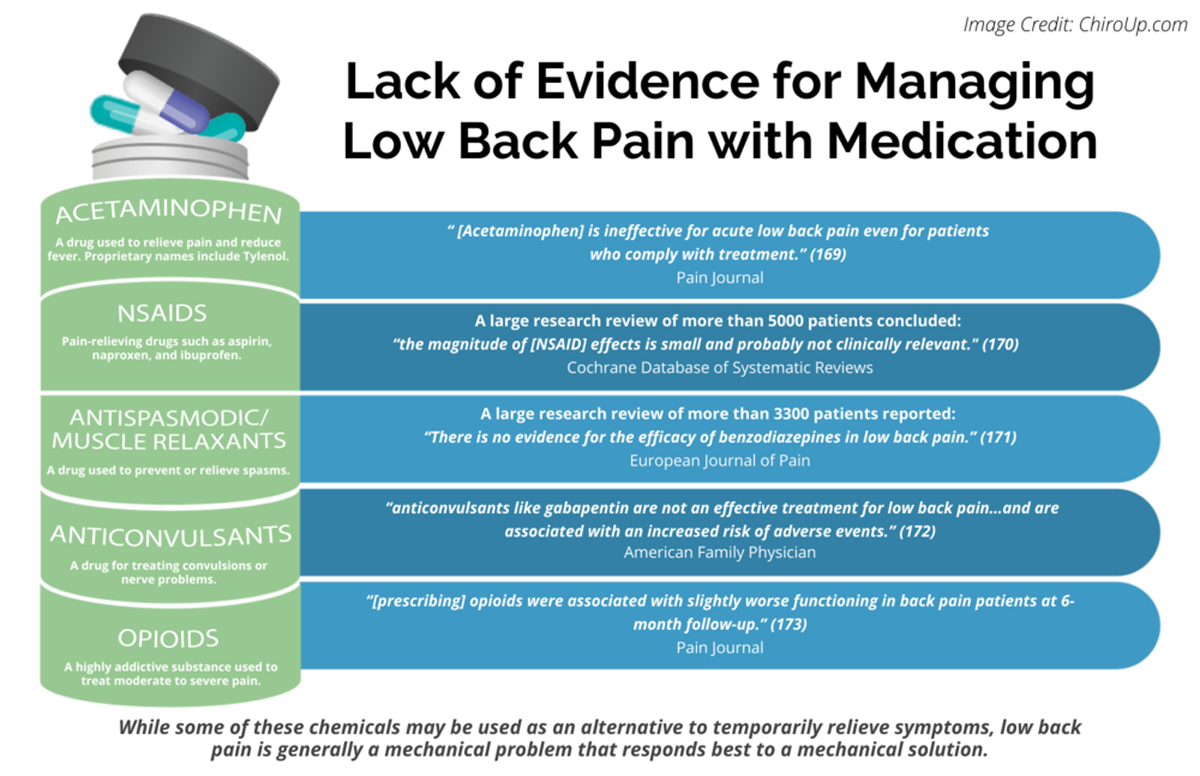

Gabapentin and Pregabalin Not Effective for
Low Back Pain with or Without RadiculopathyThis section is compiled by Frank M. Painter, D.C.
Send all comments or additions to: Frankp@chiro.org




FROM: American Family Physician 2019 (Mar 15); 99 (6): Online ~ FULL TEXT
OPEN ACCESS MARK H. EBELL, MD, MS
University of Georgia,
Athens, Ga.

FROM: Pain 2019 (Dec)
FROM: Cochrane Database 2020 (Apr)
FROM: European Journal of Pain 2017 (Feb)
FROM: American Family Physician 2019 (Mar 15)
FROM: PAIN 2013 (Jul)
Thanks to ChiroUP 2021 Chiropractic Outcomes SynopsisClinical Question
Are anticonvulsants an effective treatment for low back pain?
Bottom Line
The use of anticonvulsants like gabapentin (Neurontin) for painful conditions has increased greatly in recent years. This review finds good evidence that these drugs are not an effective treatment for low back pain with or without radiculopathy, and are associated with an increased risk of adverse events.
(Level of Evidence = 1a)
Synopsis
Particularly in this era of heightened awareness of the potential harms of opioids, anticonvulsants are often prescribed for the treatment of painful conditions. Although there is evidence of their effectiveness, primarily for peripheral and diabetic neuropathy, anticonvulsants are increasingly prescribed for other conditions, including low back pain.
This systematic review included a comprehensive search of the literature, and the authors identified nine randomized trials (three of which were crossover studies) that compared topiramate (Topamax), pregabalin (Lyrica), or gabapentin with placebo in patients with low back pain with or without radiculopathy.
They excluded studies of pregnant women; preoperative patients; and patients with mixed conditions, such as neck and back pain. The trials were assessed for risk of bias, and only one was at high risk. The studies used a range of pain scales, so the standardized mean difference in pain scores between treatment and placebo groups was the primary outcome.
The nine studies reported a total of 14 comparisons, with only two showing a statistically significant benefit. One was a small study of high-dose gabapentin (3,600 mg per day) in 43 patients with lumbar radicular pain, and the other was a study of topiramate (300 mg per day) in 96 patients with low back pain. The other studies of topiramate, pregabalin, or gabapentin found no benefit.
Where results could be pooled, there was no difference between groups. There was no difference in serious adverse events: four in the pregabalin group and six in the placebo group (although these were reported in only two studies with a total of 423 patients). Any adverse events were significantly more common with active treatment (relative risk = 1.4; 95% CI, 1.2 to 1.7).

Return to LOW BACK PAIN
Return to FAILED DRUG TRIALS
Since 3-02-2023


| Home Page | Visit Our Sponsors | Become a Sponsor |
Please read our DISCLAIMER |